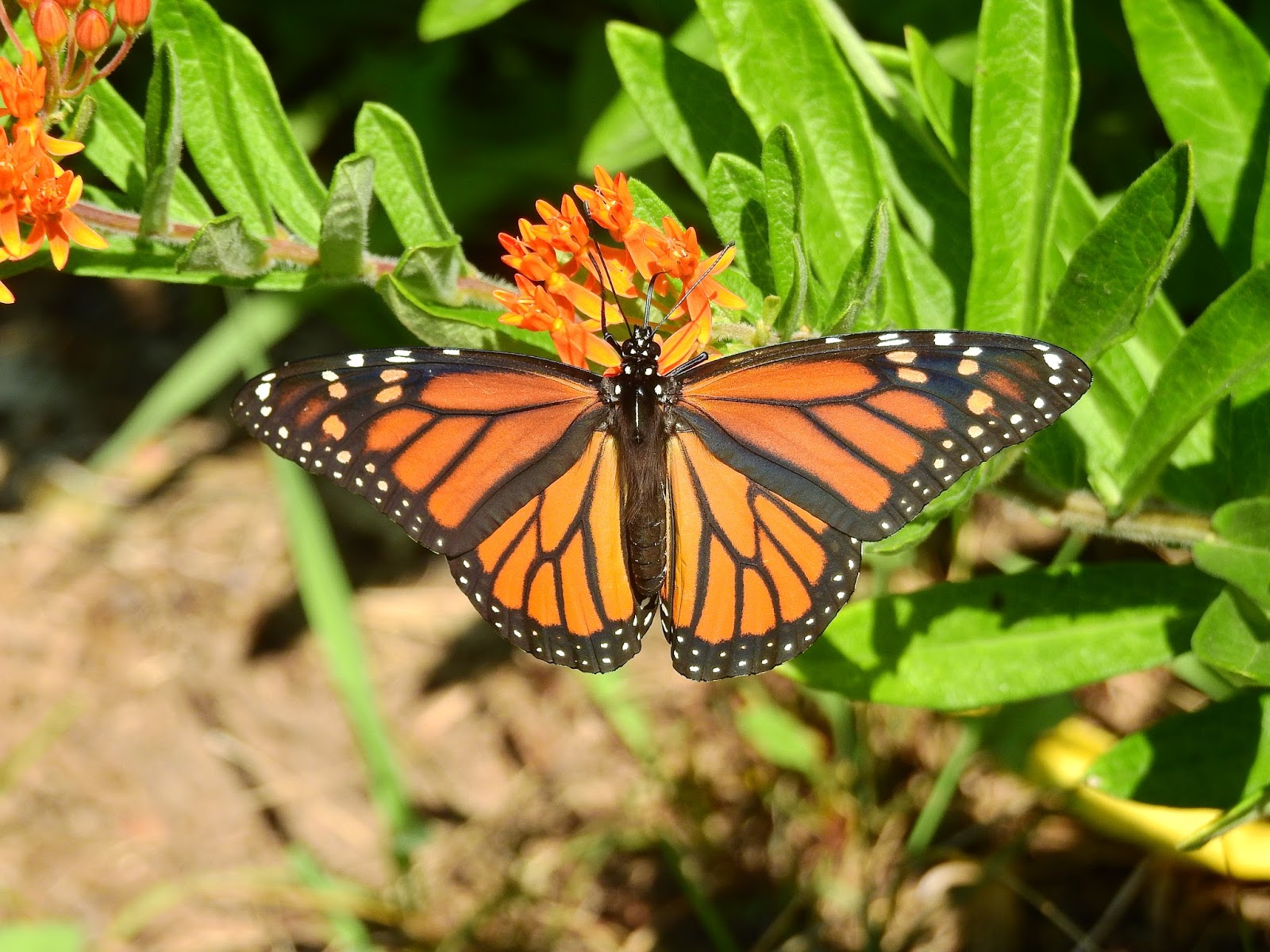Bethpage State Park Participates in This Year's Monarch Monitoring Blitz
Every year, when the flowers begin to bloom, Bethpage State Park becomes a stomping grounds for monarch butterflies. This is a likely result of our park containing acres of natural habitat, which provide both oviposition sites and nutritional resources for the butterflies before their long migration to overwintering locations in Mexico.
With that in mind, this year we decided to participate in Monarch Joint Venture's Monarch Monitoring Blitz. This was a week long event, from July 29th-August 5th, where locations in Canada, U.S and Mexico made a collective effort to observe and note monarch activity. The only requirement to participate in this event was that the location being monitored had to have growing milkweed. Milkweed is a native plant that provides adult monarchs with nectar and monarch caterpillars with the only food source to complete its life cycle. Given that Bethpage State Park has multiple milkweed varieties growing in large stands all throughout the park, participating in this event seemed like a no-brainer.
 |
| Common Milkweed growing naturally in the rough area of #4 of the Black Course. Pictured above is a monarch in the milkweed leaves. |
Monitoring took place in areas like the patch of common milkweed (Asclepias syriaca) on #4 and #8 of our Black Course as well as in our pollinator gardens on the Green Acre and Picnic Area (where common milkweed and swamp milkweed [Asclepias incarnata]/ butterflyweed [Asclepias tuberosa] can be found, respectively).
At the end of each day, this data was entered into the Monarch Larva Monitoring Project website so that scientists would be able to access this information for a better understanding of monarch populations and their migration patterns across North America.
Data collection was simple; it required counting the number of monarchs eggs, larvae and adults in addition to the number of milkweed plants that were observed for monarch activity.
 Overall, a large number of adult monarchs were noted during the week, at various locations throughout Bethpage State Park. Adult monarchs were seen flying around milkweed patches, resting on milkweed leaves (possible egg laying), feeding on milkweed flowers (and other pollinator-friendly native plants), even seen mating. Friday, August 4th, was the most rewarding monitoring day; 35 common milkweed plants on our Black Course were observed and a total of 17 eggs and 2 instars (most likely at the 1st developmental instar stage) were found.
Overall, a large number of adult monarchs were noted during the week, at various locations throughout Bethpage State Park. Adult monarchs were seen flying around milkweed patches, resting on milkweed leaves (possible egg laying), feeding on milkweed flowers (and other pollinator-friendly native plants), even seen mating. Friday, August 4th, was the most rewarding monitoring day; 35 common milkweed plants on our Black Course were observed and a total of 17 eggs and 2 instars (most likely at the 1st developmental instar stage) were found.
The great thing about this event is that it was all made possible by citizen science. This means that the general public take part in data collection, often making the monitoring process much faster and more effective than if scientists were to collect the data all on their own. To conclude, events like this are paramount and our park wants to help. Monarch populations are dwindling and the fight to save their habitats are becoming more dire with time.









Comments
Post a Comment